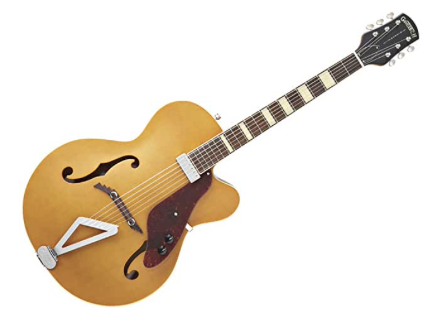 The guitar aesthetic is the name given to a set of principles underlying and guiding the work of a particular artist or artistic movement that uses the guitar.
The guitar aesthetic is the name given to a set of principles underlying and guiding the work of a particular artist or artistic movement that uses the guitar.
The guitar has, throughout its history, been associated to diverse ascetics and cultural movements.
In the middle ages, it was already possible to play instruments there were similar to the guitar, although it didn’t have the construction and strings that we currently associate to the instrument.
Romantic Era
But it was in the 19th century that the guitar aesthetic was first used as a cultural phenomenon. The classical guitar was designed and commercialized in Spain.
Therefore, guitar music was associated to the Spanish musical styles.
Several composers used this association to create master pieces using elements of Spanish music.
Modern Era
The guitar as a modern instrument evolved during the 20th century.
In the classical arena, it has become more refined, and used by several great players to perform early and modern classical music. The biggest name associate to this movement is Andres Segovia.
In popular music, the guitar has evolved to be played as an electric instrument or as a folk instrument.
The electric guitar has become the most popular version, due to its versatility for popular music.
Most rock bands need to have at least one electric guitar.
But the folk, acoustic guitar is still very popular, and used by several players.
Read this too:
Facts About Guitar History That Will Blow Your Mind
The Guitar as a Popular Instrument
Succeeding in the Music Industry
How to play an acoustic guitar
Aesthetic of the Instrument
Another meaning of guitar aesthetic is the design of the instrument, which has also evolved over time.
Until the beginning of the 19th century, the guitar was a smaller instrument, frequently having only 5 strings (gut strings).
This small instrument, however, evolved with better construction materials and techniques.
The first step was to use a different method to reinforce the guitar top, using braces in an interlocking shape.
This simple change allowed the construction of bigger guitars, without the risk of having it breaking or folding under the stress of the strings.
The guitar also added better tuners, which made it easier for players to adjust the tuning of the guitar.
By the end of the 19th century, we already had the classical guitar, as we know know. But also, it was the time when other bigger models became possible, such as the popular American string guitars.
See the following product as an example of what can be accomplished by an acoustic guitar:
The Electric Guitar
 The electric guitar was another important step in the evolution of the aesthetic of this instrument. This was possible with the development of electric components to amplify the guitar sound.
The electric guitar was another important step in the evolution of the aesthetic of this instrument. This was possible with the development of electric components to amplify the guitar sound.
The first electric guitars were just an acoustic model with electric mics. But quickly the development of this new form of the guitar resulted in different shapes and forms that we now have today.
Conclusion
The guitar aesthetic changes with time. What was popular in a place or time will probably change.
But the guitar has also being capable of changing. Unlike other instruments such as the flute or violin, the guitar has been redesigned in several shapes and forms, making it possible to play different styles.
Learning More About Guitars
If you want to learn more about guitar tuning and scales, you should get our free complete guitar course. In these guitar lessons, you’ll learn about:
- Playing any note in the fretboard
- Learning basic and advanced chords
- Tuning your guitar using different methods
- Practicing guitar scales
- Reading guitar tabs
- Knowing the parts of a guitar
- And much more
To get your free copy, just click here and request your guitar course.
